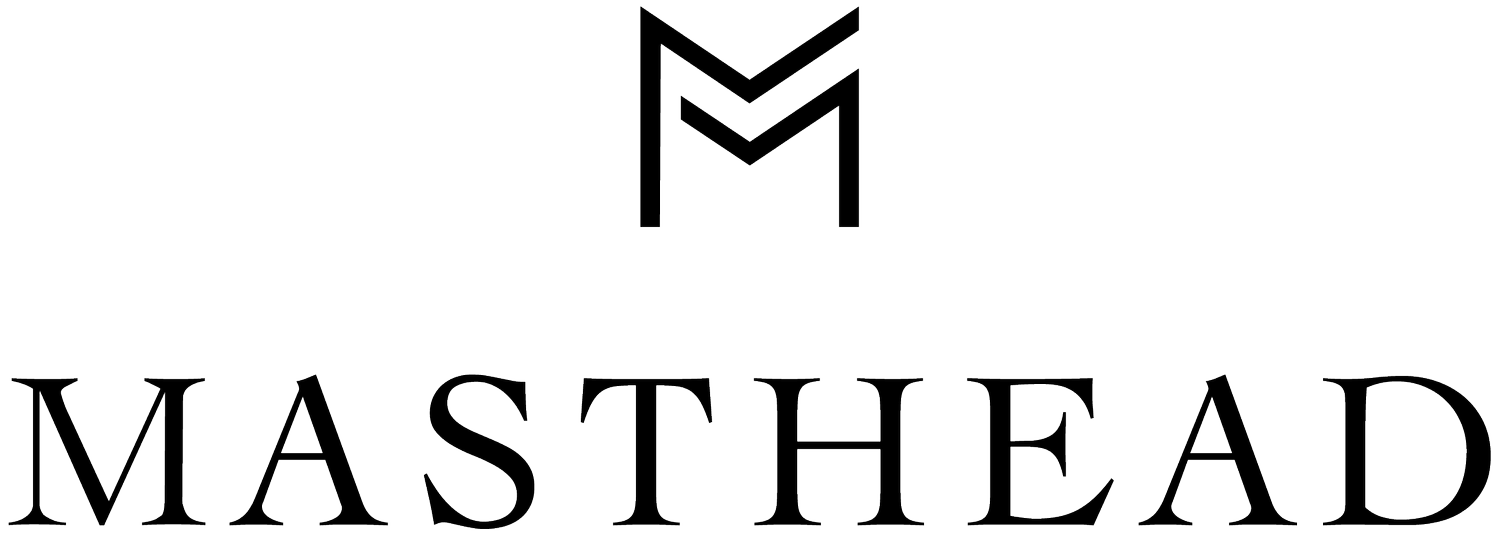
AI Consulting and Training
You've invested in new AI tools, but you're not seeing the massive productivity gains you were promised. Why? AI companies are focused on getting you to buy their technology, not providing the customized training your team needs to learn, adopt, and actually use the technology, leaving you feeling lost. We can help.
Our Approach to AI Training
At Masthead, we recognize and serve the need for highly customized AI content implementation training: accessible, step-by-step guidance that’s been missing until now.
Our AI marketing specialists work closely with brand leaders and team members to develop customized Human + AI best practices and workflows. This is the natural, more productive evolution of your current marketing processes.
We start by analyzing how teams approach critical departmental functions like content and messaging research, planning, and development. From there, we identify where new AI protocols can be implemented, how to modify approaches to leverage technology where it’s needed most, and leave plenty of room for human ingenuity and brand authenticity.
We truly love seeing the “lightbulb moment” that happens when people discover they can save hours streamlining tasks that used to consume large portions of their workweek!
5 Ways We Put AI to Action for Marketing Teams
We’ve tested dozens of AI marketing use cases out in the wild. Here are just some of the challenges we’re solving by combining emerging technology with original creativity.
Turning customer service data into content for new audiences: We tap AI to cluster feedback and transcripts into themes that inspire blog posts, FAQs, sales enablement, and campaign ideas
Extending the life of live events We’ll show you how to use AI to spin presentations, panels, and keynotes into blogs, social posts, email journeys, and video scripts—complete with clear calls to action.
Atomizing content across channels Instead of one-and-done content, we transform flagship assets into a full ecosystem—including social snippets, sales materials, video scripts, even podcast outlines—with each one tailored to its channel and audience.
Developing automated editorial calendars We help teams set up AI-powered editorial calendars that organize pitches, instantly predict best fit deadlines, and supplement writers’ story ideas aligned with current brand initiatives and industry trends.
Sales campaign acceleration From drafting nurture sequences to personalizing sales outreach, AI speeds the “first draft” phase so human teams can focus on refinement.
Why Work with Masthead for AI Training?
We recognized early on that AI transformation wouldn’t come from onboarding the newest tool, it would come from figuring out how people and AI can work together. That conviction led us to launch the AI Marketing Innovation Council, where we test tools and workflows in real-world settings alongside brand leaders and practitioners.
Through the Council and our client work, we’ve zeroed in on what’s hype, what’s genuinely useful, and what reliably drives ROI in new ways. Every workflow we design with our clients is built on hands-on testing and direct feedback from marketing teams, not vendor promises.
When you partner with us for AI training, you’ll work with an experienced team focused on creating practical, easy-to-adopt workflows that help you do more (much more!) with the tools and resources you already have.
From Consulting to Training: What Engagements Look Like
Most organizations don’t know exactly what they need at the start of their AI journey—and that’s definitely okay! AI training is new for nearly everyone.
Our engagements typically begin with hourly consulting sessions where we listen, learn your current marketing and messaging systems, and identify the strongest opportunities for AI to help. From there, we define the right scope, whether that’s customized training, workflow design, or ongoing advisory. That way, you get the right level of support at the right time, and training is built on a foundation of real business needs, not theory.
Sample AI Training and Consulting Stages
Phase 1: Initial Audit & Assessment
We start by unpacking into your current processes and pain points. This discovery work shows us where AI can create quick wins and longer-term transformation.
Phase 2: Designing & Planning
From what we learn, we’ll build a tailored roadmap, scoping the most promising AI use cases and identifying the workflows or training that will drive compelling wins for your team.
Phase 3: Training & Implementation
We run hands-on workshops where teams practice new Human + AI workflows, with guided support, real examples, and clear action items. By the end, marketers don’t just hear about AI—they’ve already started using it in their day-to-day work.
Phase 4: Supporting & Evolving
After training, we provide playbooks, continued advisory, and ongoing refinement. This ensures your team keeps building confidence and that your systems grow with the pace of AI.
Frequently Asked Questions About AI Training
If we work to implement AI tools and workflows, will they end up replacing our marketing team members?
AI tools are designed to support (not replace) marketing teams. While tools can accelerate repetitive tasks, like research, first drafts, or building out content calendars, real people remain essential for strategy, voice, and brand storytelling. At Masthead, we build “human-in-the-loop” systems where AI handles volume and speed, while people focus on the parts of the work that require creativity, judgment, and empathy. The result is marketers getting more time and headspace to do their best work. And that’s great for business, too.
How can AI training make our day-to-day marketing work more efficient and productive without losing quality?
Most teams dabble in AI casually but don’t have structured ways to apply it. Training shifts that. We show practitioners how to use AI for very specific, repeatable workflows: clustering customer insights, generating campaign briefs, drafting copy variations, or repurposing content across formats. With the right guardrails, quality doesn’t drop. In fact, it improves, because teams spend less time on grunt work and more time on refining strategy, messaging, and creative direction.
My leader wants me to show AI results right now. What’s the quickest way to see real productivity gains from AI in content and marketing campaigns?
A lot of people think AI’s biggest time savings come from having it write first drafts, but that’s not where the real productivity leaps happen. The biggest gains come earlier and later in the content lifecycle: in planning, organization, and orchestration.
If used strategically, AI can drastically shorten the time it takes to go from strategic initiatives and content pillars to fully mapped, ready-to-execute editorial plans.That means AI supports:
Clustering themes and opportunities from strategic inputs or customer data
Drafting and organizing pitches around priority initiatives
Automating the creation of editorial calendars and predicting ideal deadlines
Training AI to assist editors with organizing, honing, and repurposing human-written content
Quickly turning existing assets into new formats (social, sales, SEO, etc.)
The result: Real time back in your week, faster editorial momentum, and a team that’s not just “using AI,” but running a smarter, smoother operation.
Does our company need to invest in new AI software, or can we get results with the tools we already use (Google Workspace, Slack, HubSpot, etc.)?
In most cases, you don’t need a major software overhaul. Many organizations already have access to AI capabilities inside their existing tools, whether that’s Google Docs, HubSpot, or project management platforms. Our consulting identifies what you can unlock with what you already own, and we only recommend new platforms when there’s a clear ROI. This lowers barriers to adoption, builds confidence, and prevents “AI tool fatigue.”
How can AI help us turn events, webinars, or presentations into multi-channel campaigns that drive action?
Event content is often underleveraged. With AI, a single keynote or webinar can be transformed into an entire content engine: blog recaps, short-form video scripts, LinkedIn carousels, email journeys, and sales enablement assets. We work with teams to design workflows where AI extracts key messages, drafts usable content, and suggests channel-specific adaptations, all while keeping a human in the loop for tone, accuracy, and CTA alignment. This approach maximizes ROI from every event.
What’s the difference between casually prompting ChatGPT and building reliable AI systems and workflows for our team?
Prompting an LLM for ad-hoc help is useful, but it doesn’t scale. Reliable workflows are about systematizing that interaction, creating consistent inputs, outputs, and review steps that the whole team can use. For example, rather than each person prompting ChatGPT differently to draft a press release, we create a standardized workflow that includes brand guidelines, key messages, and review steps. That consistency produces predictable, high-quality results and makes adoption sustainable across the team.
How do we measure if AI is actually saving time and money in marketing, content, and communications?
We help clients establish baselines for current processes (time to brief, campaign build time, content cycle speed) and then measure improvements after AI adoption. Metrics often include hours saved per task, campaign acceleration rates, cost-per-asset reductions, and even qualitative measures like increased creative output. Having clear benchmarks ensures that teams can demonstrate ROI to leadership, moving the conversation from “AI experiments” to “proven impact.”
How does Masthead’s AI training differ from generic “lunch-and-learn” sessions or one-off demos?
Generic AI sessions often focus on showing what tools can do. Masthead’s training is rooted in how your team actually works. We map your workflows, train employees on real projects, and leave behind playbooks they can use every day. This hands-on, embedded approach builds confidence, speeds adoption, and ensures the training sticks—long after the session ends.
What is a human-in-the-loop AI marketing system? Why does my team need one?
A human-in-the-loop marketing system defines where AI adds value and where real people stay essential. For example: AI drafts a campaign outline, but editors review it for brand voice and strategic fit. AI clusters customer insights, but humans decide which themes become campaigns. This balance ensures quality and protects the brand while still unlocking efficiency. Without it, teams risk inconsistency, errors, or overreliance on AI. With it, they gain clarity, scalability, and trust in their new workflows.
Contact us.
We’d love to hear from you!
Please complete the form to get in touch with us.

